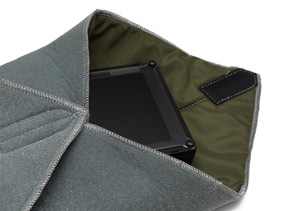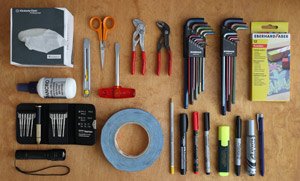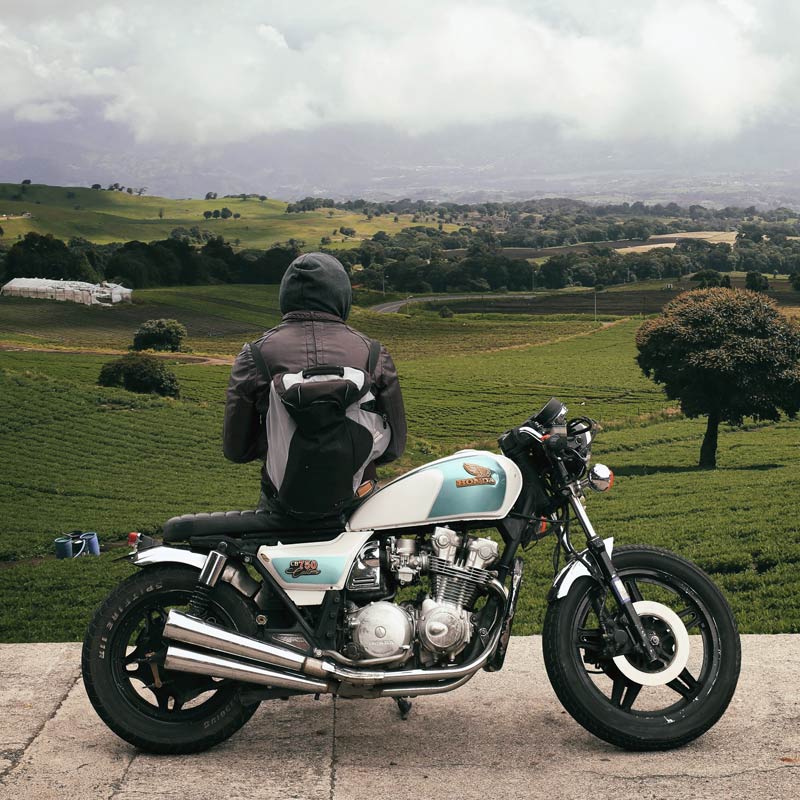
Touring by motorcycle is one of the best ways to travel and explore the world. Wind in your hair (or helmet), buzz in your crotch, you know the drill. If you are here, chances are you don’t need us to sell motorcycle travel to you. A bike can take you to amazing places, and it will not take long for you to be itching to take more than phone snaps. But how do you select the best camera for your motorcycling adventures?
Liberating as it may be, traveling by motorcycle does have it’s quirks. When it comes to photography gear, there are a few things to consider. A motorcycle touring camera needs to be able to survive the trip, be easy to pack and use and provide a big enough quality premium over a smartphone to justify bringing it along. In a nutshell, you need a tough, compact camera with decent specs and optics. But let’s break down the requirements a bit further.
Durability
When choosing a camera to accompany you on a motorcycle trip, you need to make sure it can survive the hardships this mode of travel may throw at it. No point in getting the most amazing camera to the most amazing places only to have it disintegrate in your tank bag. Motorcycle travel is not going to be kind to your equipment. If you’ve riden for a while, you most likely know what to expect. Exposure to elements is a given, and there’s usually quite a bit of vibration. You need gear that will stand up to this. If you are going on a big trip, you might also find our Off the Grid Photography Gear write-up interesting.
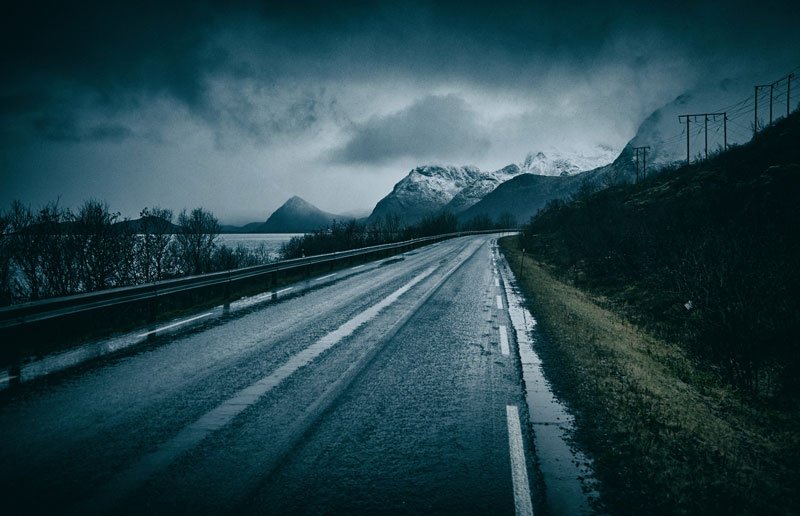
Water
Even if you are a fair weather rider and try to avoid high speed confrontation with rain, you know it’s not always possible. Sooner or later that cloud will catch up, and when it does, water gets everywhere. So, instead of hoping for the best, be prepared. Camera wise, this means you have two avenues of action to deal with water.
First option is to get a camera that does not mind some water. There are plenty of models that allow for submersion down to 10 meters underwater right out of the box. It’s also useful that many of these watersports oriented models are also shockproof to a certain extent and the underwater controls also work nicely with motorcycle gloves. A camera like this is probably going to be the lightest, most compact option. Because the camera is ready to face adversity as is, you can go light on the protection. The downside to this option is that waterproof cameras are usually pretty mediocore when it comes to photographic prowess.
The second option is getting a regular, non-waterproof camera and equipping it with suitable protection against the elements. This protection can be in the form of a heavy duty camera bag, a small dry bag, a hard case or a full blown underwater enclosure. This option gives you significantly more choice in terms of specs and functionality, but will most likely be more expensive and bulkier.

Vibration
Every rider knows that vibration is omnipresent in motorcycling. It’s just the nature of the beast, even the most balanced flat twin BMW will have some. Obviously, some models are worse than others, with certain single-cilinder offenders having nicknames like the paint shaker. Bottom line is, any bike will subject you and your equipment to significantly more vibrations than the average car.
And if there is one thing precision optical equipment like cameras does not like it’s vibration. Given enough time, vibration can dismantle a lens, knock a shutter out or jam a stabilized sensor. As with water, dealing with vibration is also best served by a two-pronged approach.
To start, some cameras are inherently better prepared to deal with vibration than others. Generally, the fewer moving parts a camera has, the less susceptible to vibration it is. Any camera with a sensor shift image stabilization will be more vulnerable to shocks and vibration than a non-stabilized sensor model. A complex zoom lens with optical image stabilization will be a worse choice than a simple prime.
The second part to dealing with vibration is isolation. The more padding you put between the source of vibration (in this case the engine and to a lesser degree the suspension) and the gear, the better it will fare in the long run. In addition, some places on a bike get more vibes than others. A tank bag is better than a top case, a breast pocket is best. A top case, even if it may be the only option for larger cameras, is likely going to be one of the shakiest places on a bike.
Ergonomics
After ensuring the camera can survive the turmoil of motorcycle touring, you need to consider how you will be using it. When choosing a motorcycle travel companion camera, ergonomics are doubly important. You need to consider how comfortable the camera will be both in terms of carrying the camera and in operation. Let’s have a look at these two aspects in more detail:
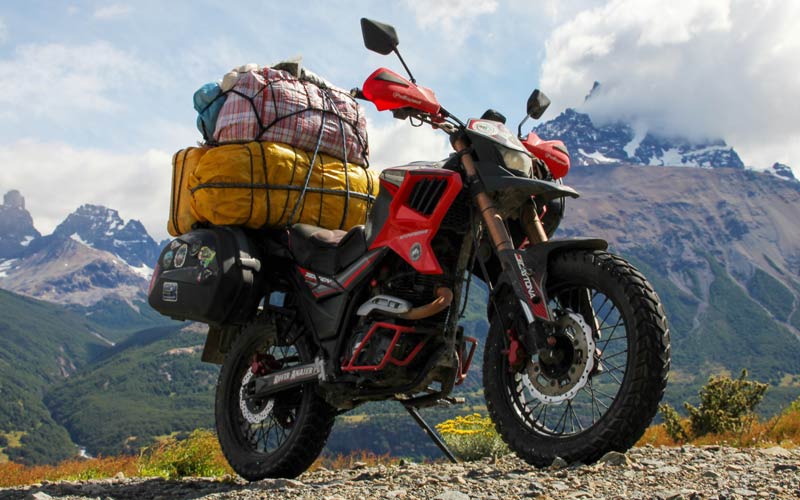
Form factor
Depending on how you bike is set up, there’s only a handful of places where you can carry a camera on a bike. Sports bikes are, naturally, the most stripped out in terms of storage. You may have a tiny bit of storage under a seat and you can strap a tank bag on but that’s about it. If your ride is longer distance oriented, you may have a pannier setup or a dry-bag strapping system on the tail. Tourers are, unsurprisingly, the most versatile when it comes down to finding a sport for a camera. In addition to any underseat storage, tank bags or panniers, touring bikes are often equipped with top cases which can be a great solution for bulkier gear.
On any bike, aside from the hard-mounted options there’s always the possibility of carrying the camera on your person. There’s a couple of ways to do that – a jacket pocket, a waist bag (aka fanny pack) or a backpack. When it comes to strapping gear to your body while riding, there’s some safety considerations to be made. Some riders would only put soft items (like clothes or food) in a backpack. There’s always a possibility of you landing on it in a spill, and a big, chunky lens might make the fall that much more unpleasant. On the other hand, plenty or motorcyclists ride with stuffed toolbags on their waists with no worries. It all comes down to personal preferance and risk tolerance.
With all that out of the way, the form factor of a camera is one of the main considerations to make when choosing a glass eyed riding buddy. Start with your typical riding configuration, and work out how much space you can allocate to the gear. Bear in mind that the easier it is to get to your motorcycle camera, the more likely you are to use it. Stuffing the camera into your clothes dry-bag may provide it with the most protection, but I can assure you it will not see much action there. If you have to unpack half your luggage every time a picture opportunity rolls around, you’ll quickly revert back to the phone snaps.
Going back to the topic of vibration mitigation, a lot of what you can do about it comes down to the form factor of the camera you choose. A slim point-and-shoot or a mirrorless camera with a pancake lens may fit into a breast pocket nicely. A bulkier DSLR on the other hand, may not even fit in a tank bag.
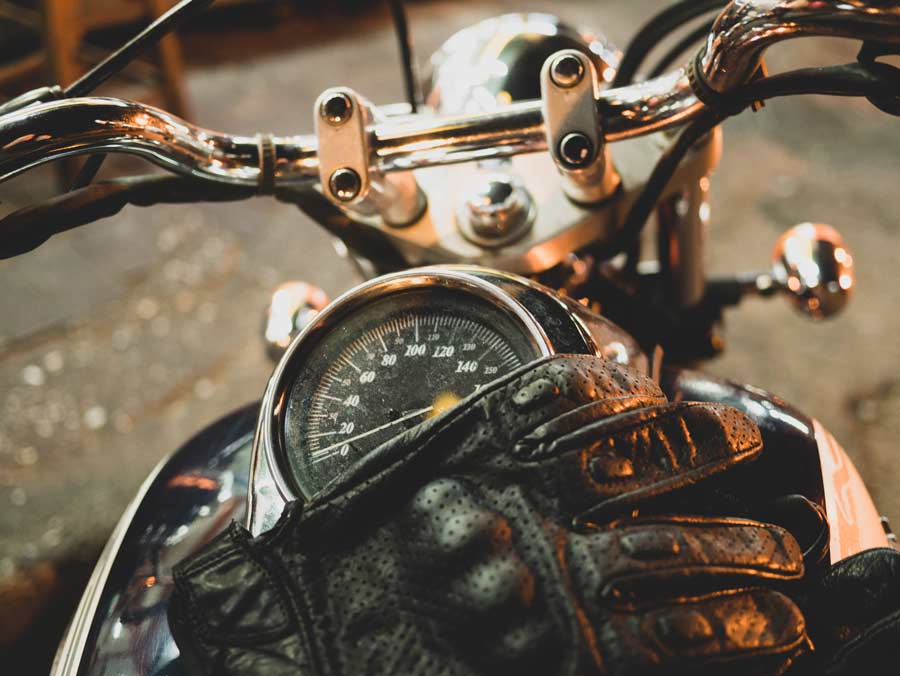
In use
The second part of the motorcycling camera ergonomics equation comes down to the ease of use of the camera itself. As we discussed above, having the camera easily accessible at all times is a necessary prerequisite for success. However, ease of use is an equally important factor. I can speak from experience when I tell you that if you have to get off the bike, remove your gloves and take off your helmet every time you want to take a picture, you will quickly start skipping opportunities to avoid the hassle.
Gloves are an essential motorcycling accessory. Depending on the climate you are riding in, you may use thicker or thinner ones, but most riders always wear them. In order for a camera to be usable with gloves, it needs to have physical controls for it’s main functions. Even though some newer gloves have touchscreen finger pads, it’s still not very common and a rather unwieldy setup. Ideally, a motorcycle travel camera will have large knobs and buttons for the main settings like aperture, shutter speed and ISO. If you are using a zoom lens, manual focus or the lens has an aperture ring, check if those are glove freindly too. With a manual focus lens, consider zone focusing as a way around gloved fumbling with lens rings. As discussed above, some underwater cameras are well suited to gloved use, as divers often use them with gloves too.
Helmets are another motorcycling essential. Even though they may be optional in some jurisdictions, a helmet is always a good idea. I never ride without, nor would any biker I know. There are different styles and types of lids out there, and some may interfere with your photography more than others. I prefer full-face helmets, and my particular model precludes me from ever setting my eye on a viewfinder with the helmet on. Pretty much all modern cameras, including DSLRs, allow you to frame using the LCD, but depending on ambient conditions that may not be very easy or accurate.
Open faced helmets will generally allow for a viewfinder to be used, while making a small compromise on the safety of your lower jaw. A convertible (aka modular) helmet supposedy offers best of both worlds, with some models reported slightly noisier than their full-face counterparts.


